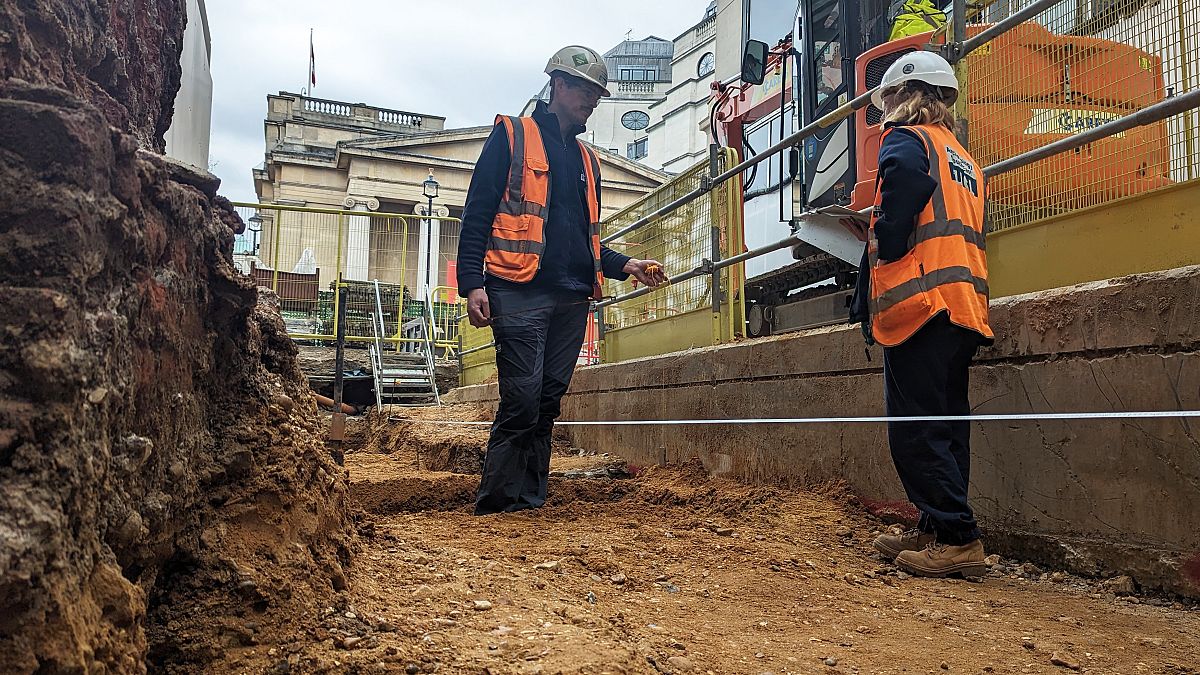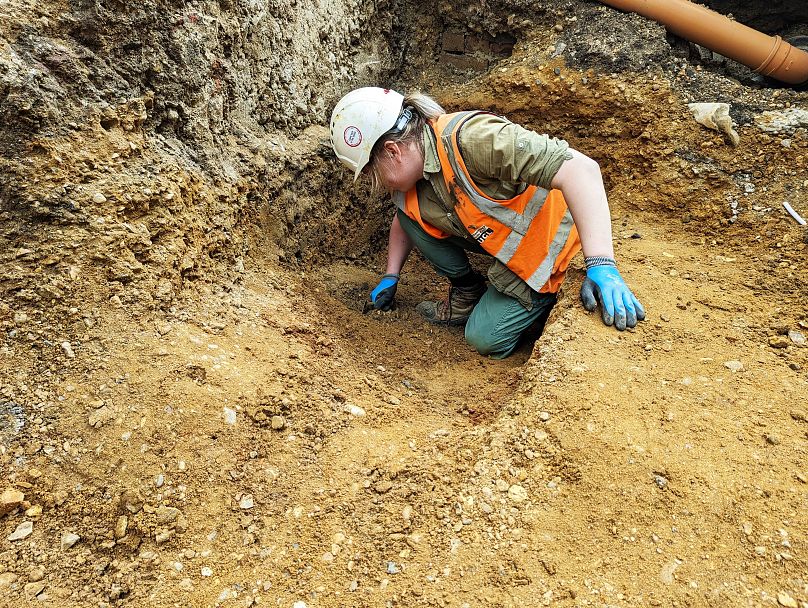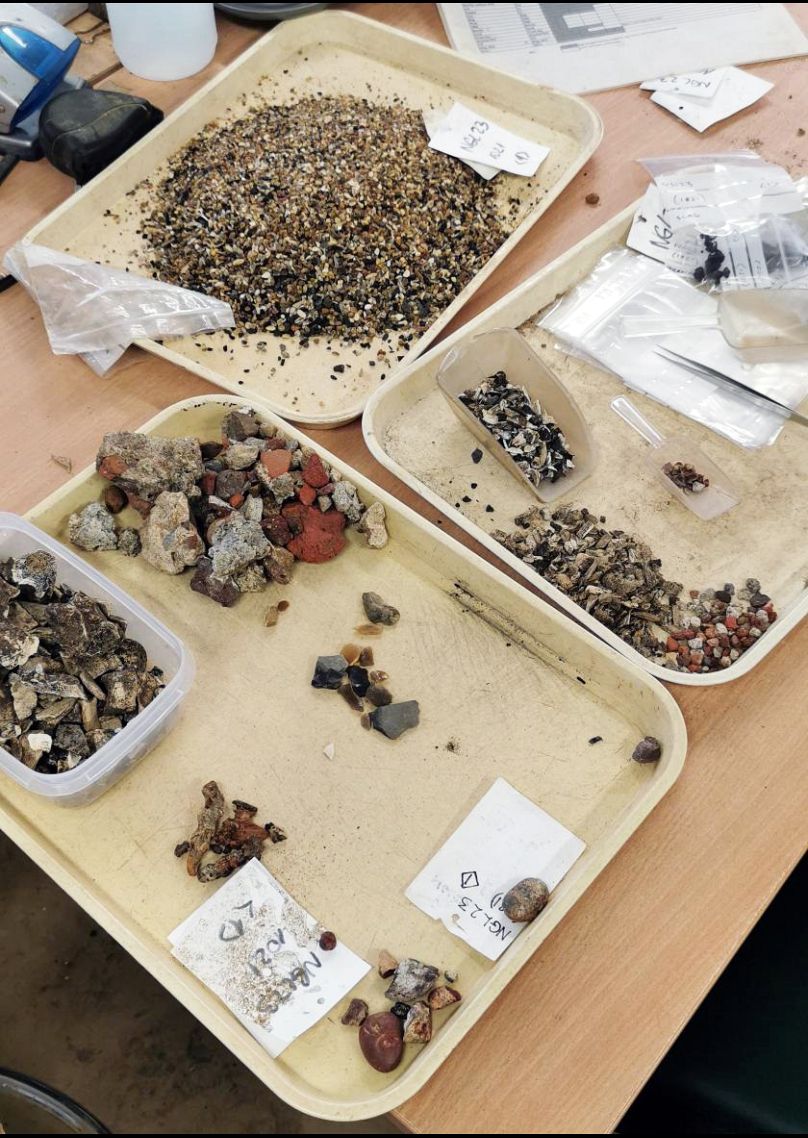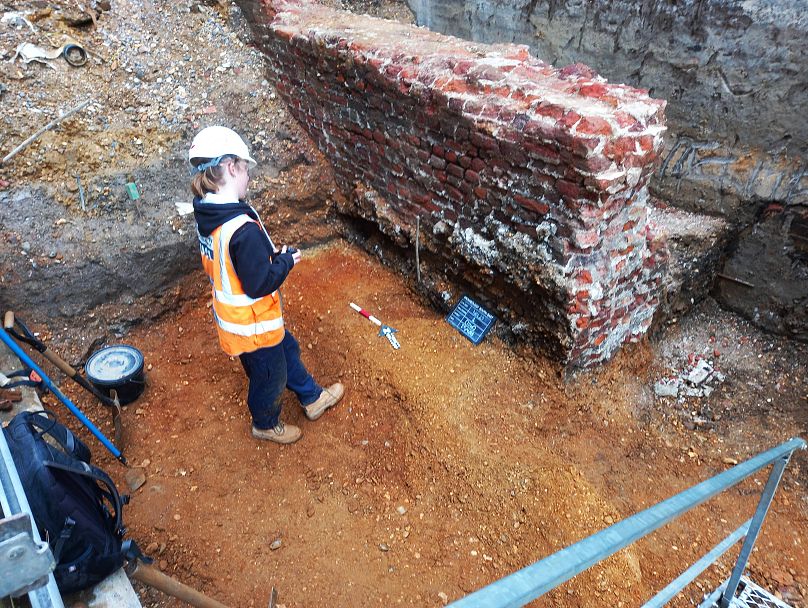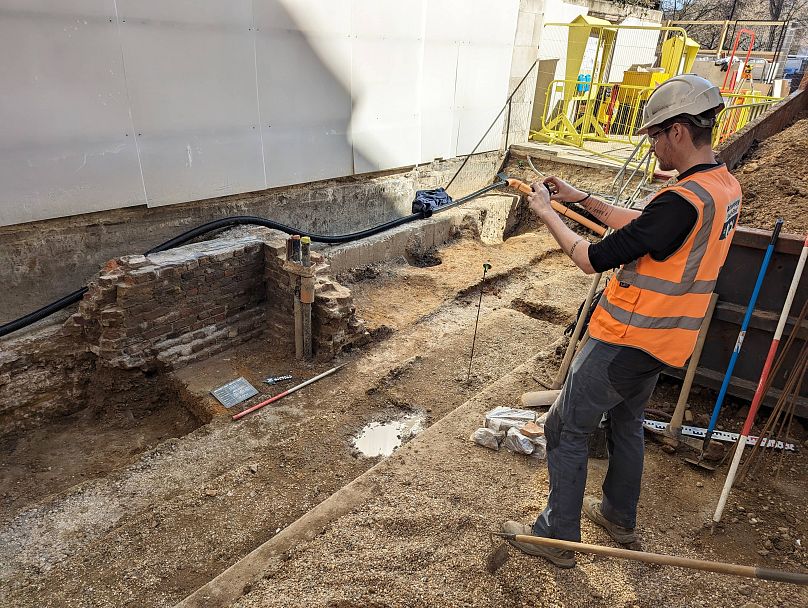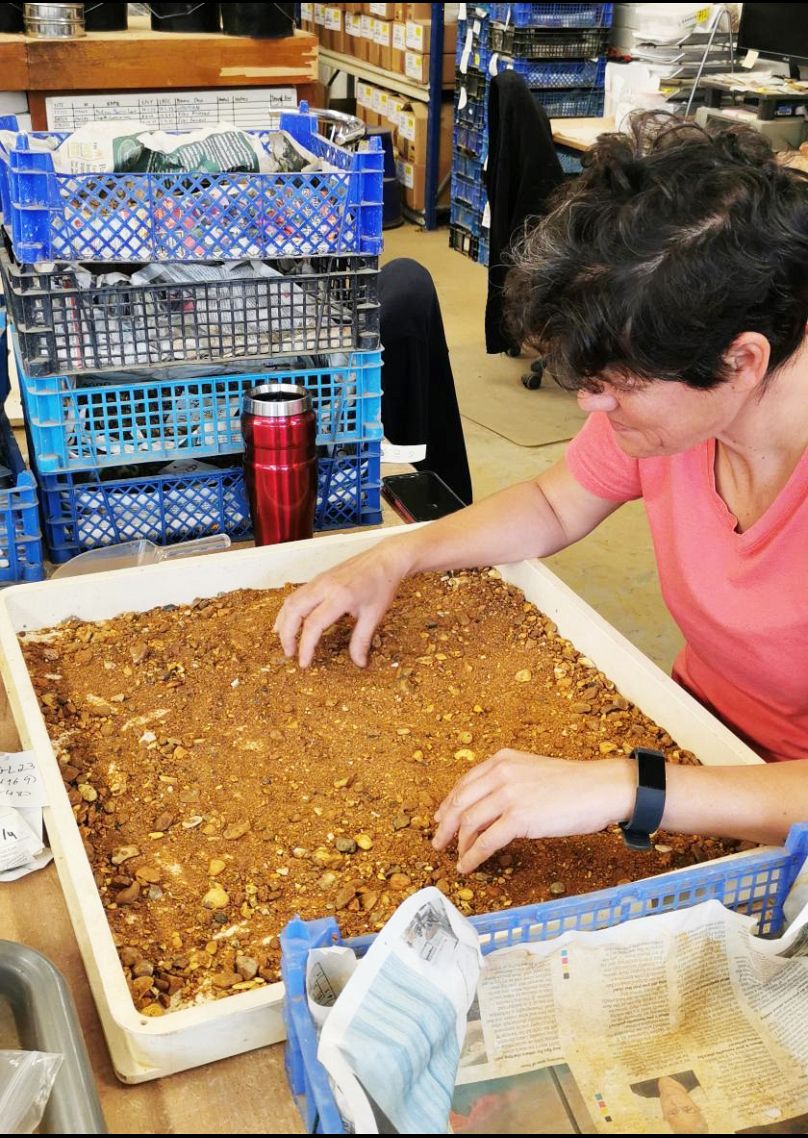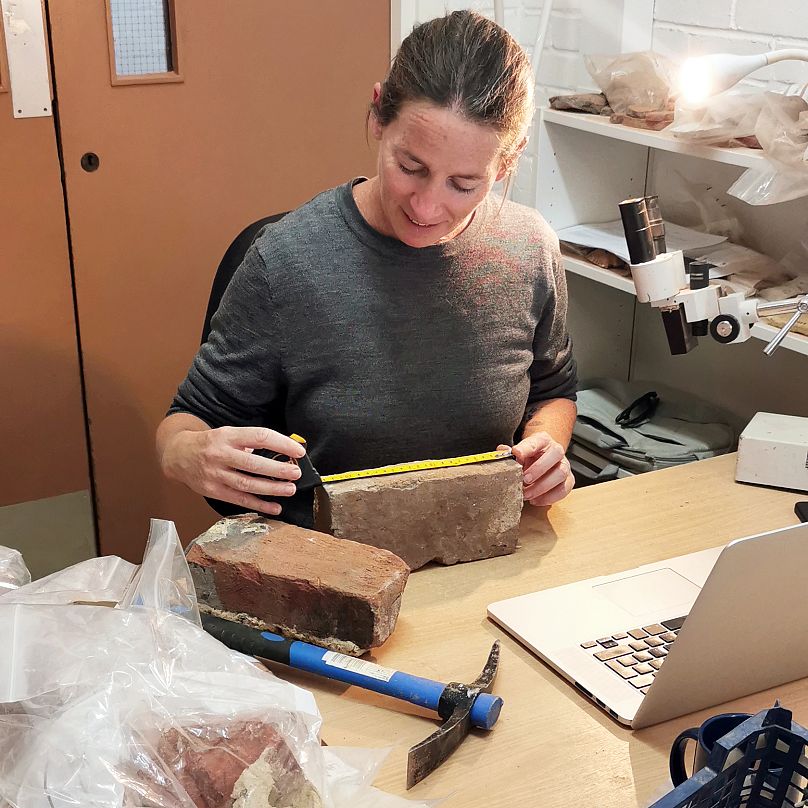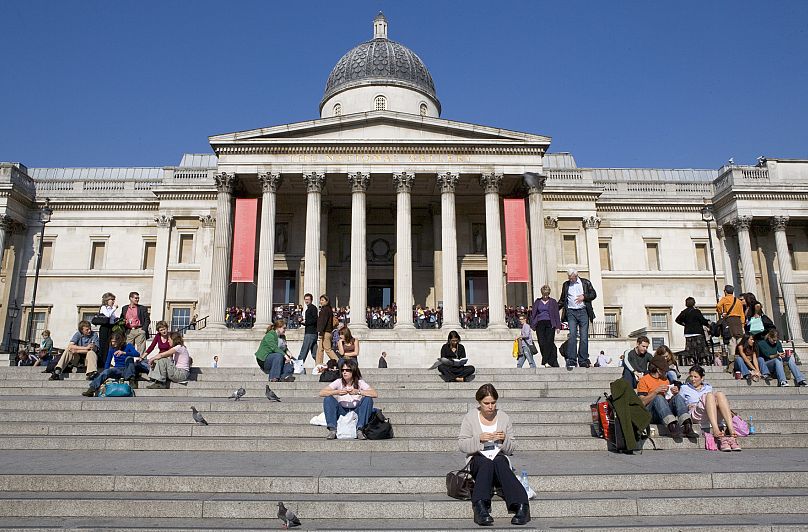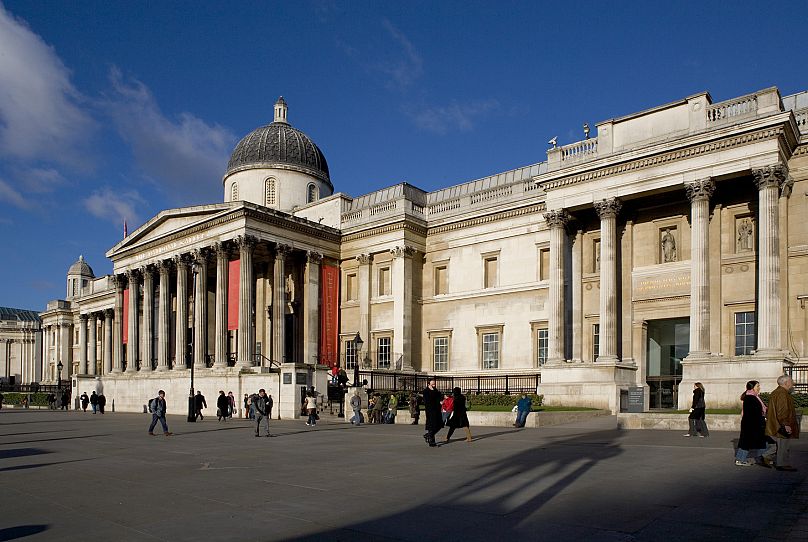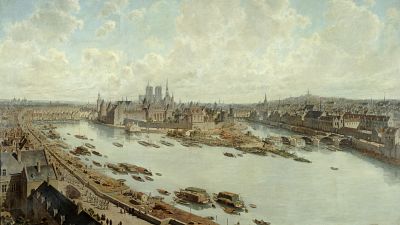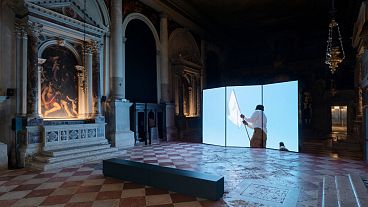The site, which was discovered while expanding the National Gallery for its 200th anniversary, suggests that the urban centre of Saxon Lundenwic extended further west than previously thought.
The National Gallery in London has been undergoing a major makeover for its 200th anniversary.
But as builders prepared to dig a new tunnel earlier this month underneath the National Gallery’s Jubilee Walk – the walkway linking Trafalgar Square and Orange Street – they also made a stunning archaeological discovery.
The excavation site, with artefacts that include a hearth dating back to the 7th or 8th century, suggests that the Saxon settlement of Ludenwic once existed where the National Gallery now stands.
Archaeologists from Archaeology South-East (UCL) unearthed a hearth, postholes, stakeholes, pits, ditches and levelling deposits from the site.
“The evidence we uncovered suggests the urban centre of Lundenwic extends further west than originally thought,” said Stephen White, who led the Jubilee Walk excavations for Archaeology South-East. “This was made all the more exciting by having the chance to share that information, and how it relates to archaeology across London, with young people from this city.”
Post-medieval walls were also discovered above the sequence of Saxon layers, with the earliest wall believed to have been built in the 17th or 18th centuries.
Archaeologists also found evidence that settlers went through several phases of rebuilding these walls across time, using different building materials all the way up until the 19th century.
Layers of London history
The National Gallery excavation is just the latest discovery that confirms present-day London is sitting upon layers upon layers of history.
Thousands of archaeological sites have been investigated in the Greater London area over the past 100 years, each revealing more about the city’s past.
Before London, there was the walled Roman city of Londinium, which was founded in 47 AD and abandoned by its settlers in the 5th century.
Londinium’s successor was Lundenwic, a Saxon trading post that extended from the Roman city’s western walls starting in the 7th century.
The National Gallery lies to the western end of this settlement – and while excavations in the immediate area have found Saxon material in the past, the Jubilee Walk site is the first excavation to prove that the urban centre extended so far west.
200 years of the National Gallery
The National Gallery was founded by Parliament in 1824. It houses the UK’s collection of paintings in the Western European tradition from the late 13th to early 20th centuries.
The collection includes works by masters like Raphael, Rembrandt, Renoir, Bellini, Cezanne, Degas, Monet, Van Gogh and Van Dyck.
Jubilee Walk was first created when the National Gallery built the Sainsbury Wing in 1991, which was designed as a new home for its collection of early Renaissance paintings.
Before, the area just north of Trafalgar Square served different purposes, from King Richard II’s Royal Mews for hunting hawks to stables and even a possible row of houses.
This latest excavation is proof of the National Gallery’s place at the heart of London’s history, according to Sarah Younger, Director of the NG200 Welcome Project.
“It brings home to us how everything we are building and re-constructing as part of this project will be part of the fabric and history of London for centuries to come,” Younger said.
“It’s shown to us that the enriching history of the National Gallery does not start and stop at the collection that hangs inside our walls.”
